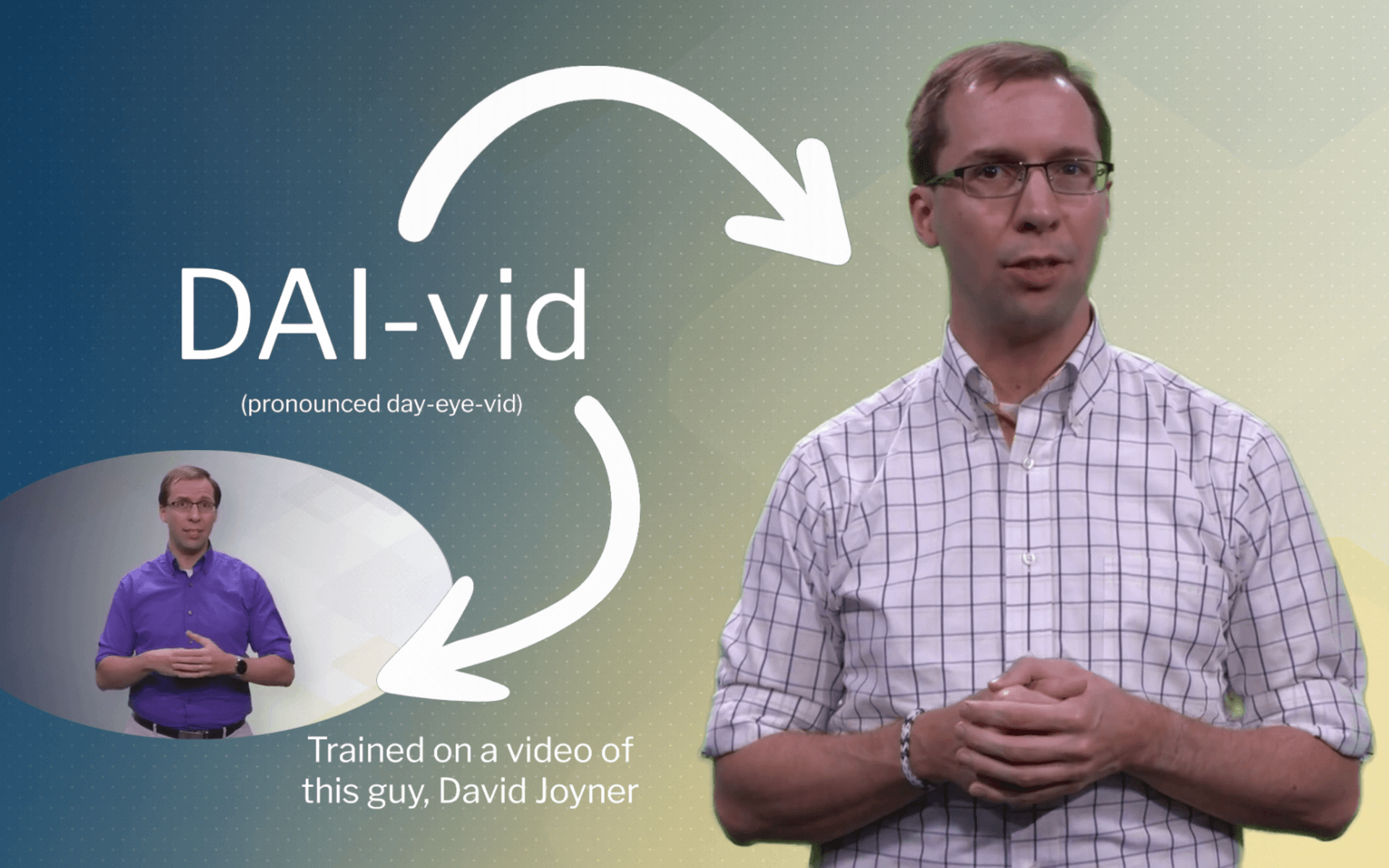News & Press
Can AI Teach AI? Georgia Tech and edX Are Testing the Theory
Written by 2U on Oct 15, 2025
Related content: Digital Education, Courses
Generative AI is everywhere. It writes code, drafts emails, and generates images. Yet, understanding how it actually works remains out of reach for most people.
When edX approached David Joyner with an idea—what if they piloted an open course about AI using AI itself?—he saw an opportunity to close the gap. At the time, he was developing a new generative AI module for Georgia Tech’s online Master of Science in Computer Science program and faced a choice: use a dry, text-based format that’s easy to update, or a lively, studio-filmed course that is time-consuming and costly to update? AI offered both—an engaging, video-driven course easily refreshed anytime with a few keystrokes.
Joyner, executive director of online education at Georgia Tech and an expert in AI and online learning, used the course material to create Foundations of Generative AI: a three-week open course on edX, 2U’s global online learning platform. It’s among the first courses where AI does a lot of the heavy lifting—video, exercises, grading, learner assistance—while Joyner shapes content and guides instruction.
An Avatar Does the Presenting
Here's how it works: Joyner wrote all the course material—10 modules covering topics from the history of AI to transformer architectures to the ethics of model alignment. Using HeyGen, a generative AI video platform, he then created an avatar of himself delivering lectures in his voice and style, training it with a five-minute studio recording that captured his appearance and speech patterns.
The course introduces Joyner's avatar—DAI-vid—upfront, so students know they're watching AI-generated instruction. A bracelet made by Joyner’s daughter, which spells AI in binary digits, clearly signals when the presenter is AI-generated.

The avatar doesn’t replace Joyner. It handles video generation while he focuses on developing the scripts and exercises, allowing for faster, more scalable course updates. This approach could be especially valuable for faculty who lack access to professional production studios.
"For me, this course was a chance to really play with how AI can support learning," Joyner said. "This field is changing so quickly that content can feel outdated in no time. With these tools, we can keep material current while giving students a first-hand look at AI in action. I’m still writing the content and exercises myself, but AI helps turn that same amount of effort into a better learning experience.”
Beyond the Avatar
While the avatar is the most visible innovation, AI is integrated throughout the course. Joyner used AI tools to generate quizzes and visuals that help students retain key concepts across the curriculum. Another AI tool, GradyAI, handles essay grading, providing rapid, highly specific feedback at a scale and speed a human TA can’t match. Xpert—edX’s suite of AI-powered tools—answers learner questions, summarizes lessons, translates content into multiple languages, and offers on-demand guidance to enhance the overall experience.
"I’ve been teaching for years, and this course gave me a chance to explore how AI can support learning in ways I couldn’t before," Joyner said. "I’m still designing the exercises, still guiding the students, but AI lets me extend my reach, giving faster feedback, testing new approaches, and seeing what truly helps learners."
The Challenge: Keeping Courses Current
This pilot tackles a common problem in online education: courses can’t always keep up with fast-changing fields. Traditional updates—re-recording lectures, re-editing, re-creating quizzes, and relaunching—take time.
Guided by its AI + HI framework, edX is exploring how AI can manage routine production while human interaction keeps learning personal, meaningful, and responsive. While faculty retain full control of content and instruction, they can experiment with new teaching methods and update courses efficiently without giving up their central role.
"Experimentation is how innovation happens," said Anant Agarwal, founder of edX and chief academic officer at 2U. "Through this pilot, we’re exploring how AI could open new possibilities for teaching and learning, making education more accessible, responsive, and impactful."
The Course Experience
The three-week, self-paced course takes two to three hours per week. It is free to audit and requires no prior experience, but some background in computer science or coding helps. Joyner calls it a "home mechanic" approach.
“A lot of us are at the ‘driver’s ed’ level of AI literacy, where we’ve learned a good bit how to use the technology effectively, but we don’t really understand how it works ‘under the hood’,” Joyner says. “But understanding just a little more about how the tool works can really help you make better decisions about how to use it and get more out of it.”
By the end of the course, learners will understand how generative AI evolved from rule-based systems to today’s predictive models. They’ll know how systems like ChatGPT process language, generate responses, and where they fall short. Key concepts like tokens, context windows, transformer architectures, and alignment strategies are explained—enough to use these tools intelligently, but not at a research level.
And importantly, learners experience a course built using the same technology it teaches. For anyone trying to figure out how AI fits into their work, that firsthand experience might be the most valuable part.
“AI tools have the potential to democratize teaching,” Agarwal said. “Today, only well-resourced institutions can give every instructor a team of teaching assistants. AI can change that—giving every educator their own ‘super-TA’ to help create videos, quizzes, and feedback instantly, freeing up time for what matters most: mentoring, creativity, and human connection. This course is a step toward that future.”
Latest.
Learn more about us.
At 2U, we’re on a mission—to increase access to higher education and help partners thrive in the digital age. To learn more about who we are and what we do, follow the links below.